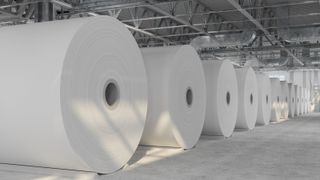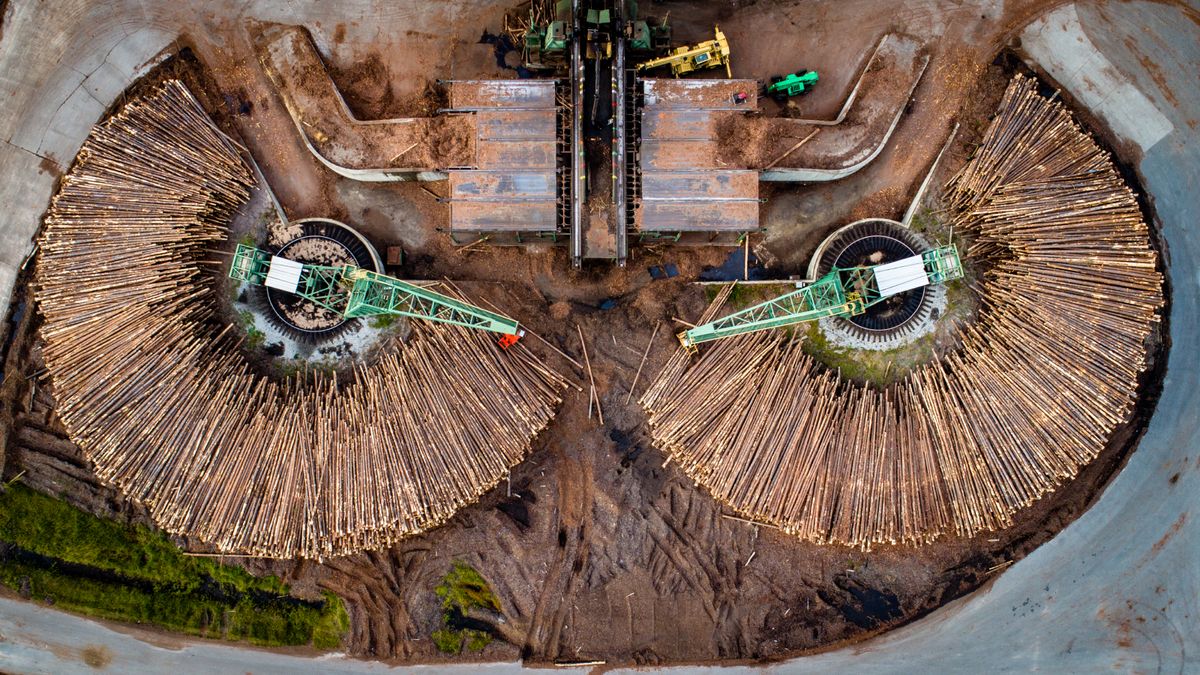Paper is a ubiquitous part of everyday life, but how is it made, and where did it originate?
Ancient Egyptians made an early version of plant-based paper using papyrus — which is where the word “paper” comes from. They removed fibers from the stem of the papyrus plant (Cyperus papyrus), a marsh reed topped with flowers that can grow up to 16.4 feet (5 meters) tall. Ancient Egyptians layered the fibers next to each other, and then dampened and pressed the sheet. Papyrus sheets were used to write letters, record administrative documents, and write stories and religious texts.
Over 2,000 years ago people in China invented a process closer to papermaking as we know it, boiling hemp plants into a pulp, then forming the pulp into a sheet and drying it. This type of papermaking traveled west to Baghdad about 1,400 years ago, where the city became famed for paper production and began to sell paper and books.
Paper then reached Europe, where medieval Europeans made paper by cutting up linen and cotton rags, soaking them, and treating them. The first rag-paper mill came to the North American European colonies in 1690.
Over time paper mills faced shortages of rags, so people turned to a cheaper and more abundant material — wood.
The first U.S. newspaper printed on paper made from trees was an edition of the Boston Weekly Journal published in January 1863.
Today, the process of making paper begins with loggers cutting trees and bringing them to paper mills: either softwood trees like pine, spruce, and fir, or hardwood trees like oak, birch, and eucalyptus. Machines slice off the bark, the inner wood is chipped into small pieces, and these pieces are boiled into a goopy pulp. How much and how exactly the pulp is cooked depends on the intended properties of the final product: the pulp is cooked and processed more if the resulting paper needs to be firmer or have less opacity.
Cell walls of tree cells are a key component to the pulp: cell walls of all plants contain cellulose, known to chemists as a linear polysaccharide. These molecules are highly durable and flexible. Cellulose fibers also absorb water well, while remaining strong. These qualities make them ideal for creating paper.
Related: The oldest tree in the world (and the 7 runner-ups)
After being cooked, the pulp is suspended in water, filtered onto a woven screen to form a sheet, pressed flat to remove lumps and water, and dried. In the past this whole process was completed one sheet at a time, but it has now been mechanized to occur much faster.
Watch On
Different types and grades of paper depend on the type of pulp used, how much the pulp has been beaten or refined, what other materials have been added to the wood pulp, properties when forming the sheets like thickness, and chemical treatment added at the end of the process, according to Ericka Redmond, chemist and paper engineer at the State University of New York School of Environmental Science and Forestry.

“The process [for making paper] has been very established,” Redmond said. .
But the paper industry is not environmentally friendly. Wastewater from the process can release pollutants that harm ecosystems and human health. So most paper innovations focus on finding new uses for residue from paper production, to make the process more sustainable, reduce the consumption of chemicals, and reduce pollutants.
Many paper mills can generate their own energy and be self-sufficient, Redmond said. Steam generated from boiling wood pulp can power the mill, and chemical residue from the papermaking process can be reused.
Paper engineers are conducting research to make the process more self-sustaining, and to understand how to plug chemical residues back into the process so the industry causes less pollution.
As the world becomes increasingly digital, paper is used less for writing and printing — but the demand for cardboard and paper packaging is still high, Redmond told Live Science. So many packages are now delivered in cardboard boxes, and grocery stores have switched from plastic to paper bags, so the paper industry is working on improving these products.
One goal is to make recycled paper packaging stronger and more durable. Redmond focuses on sustainable coatings for food packaging — for example, non-plastic, compostable coatings for the inside of paper cups that create a barrier so your paper cup won’t get soggy or leak.


